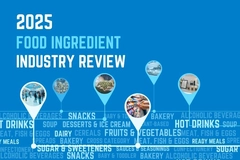
- Industry news
Industry news
- Category news
Category news
- Reports
- Key trends
- Multimedia
- Journal
- Events
- Suppliers
- Home
- Industry news
Industry news
- Category news
Category news
- Reports
- Key trends
- Multimedia
- Events
- Suppliers
“Menu manipulation” leads to healthier choices and lower carbon footprint, study reveals

New research demonstrates that making simple changes in the competition structure within set menus can influence how diners choose food options, resulting in healthier choices with a lower carbon footprint.
A study led by the University of Bristol in the UK reveals how reshuffling weekly set menus can help people make better choices.
Meal selection
The researchers tested the theory that specific health and environmental benefits can be delivered by merely rearranging the meal options on a weekly set menu, based on consumer preferences and meal attributes.
This project is known as SNEAK (Sustainable Nutrition, Environment, and Agriculture, without Consumer Knowledge). It is supported by the UK Research and Innovation (UKRI) Transforming UK Food Systems for Healthy People and a Healthy Environment Programme.

The study showed how the carbon footprint of canteen diners’ weekly meal choices dropped overall by around a third, while saturated fat levels significantly fell. In addition, diners did not appear to realize the difference.
Psychological principles
The researchers worked with the University’s Catering Department to use computational mathematics on data about the popularity of different meals. Based on the insights, they reorganized the weekly menu, swapping meals across the week to change the “competition” between dishes served each day at a catered halls of residence.
Researchers say that the scale of benefits generated by this relatively simple intervention of weekly menu manipulation, which didn’t change the actual dishes or recipes themselves and seemed to go unnoticed, was “really surprising.”
Speaking to Food Ingredients First, lead author Dr. Annika Flynn, senior research associate at the University of Bristol, dives into the results.
 The study showed how the carbon footprint of canteen diners’ weekly meal choices dropped overall by around a third, while saturated fat levels significantly fell.“As our approach uses computational modelling (a computer algorithm) to identify the menu that is predicted to generate the greatest reductions in our outcomes of interest, we were hopeful that these reductions would be realized. But it was still a surprise when the final reductions in carbon footprint and saturated fat intake were calculated, as the impact was so significant.”
The study showed how the carbon footprint of canteen diners’ weekly meal choices dropped overall by around a third, while saturated fat levels significantly fell.“As our approach uses computational modelling (a computer algorithm) to identify the menu that is predicted to generate the greatest reductions in our outcomes of interest, we were hopeful that these reductions would be realized. But it was still a surprise when the final reductions in carbon footprint and saturated fat intake were calculated, as the impact was so significant.”
“In principle, our approach involves changing the consumer's choice architecture, but in a strategic way. If we want to reduce someone’s weekly carbon footprint or intake of saturated fat, then, because people can only choose one evening meal per day, it is best to cluster the meals that have a high carbon footprint and saturated fat on the same day.”
“The net effect is that people’s total weekly carbon footprint and saturated fat intake are reduced. Our contribution is that we used computational modelling to generate an optimally swapped menu and implemented this successfully in a catered university student residence.”
Dr. Flynn explains that meals with a high carbon footprint and saturated fat content, such as lasagne and chicken Kiev, would be clustered on the same day so these more popular options compete against each other. That means greener options — like lentil chilli and cauliflower curry — are more likely to be chosen across the week. The net effect is that people’s total weekly carbon footprint and saturated fat intake are reduced.
“What is also exciting is that we modeled the potential for our approach to be applied to other important nutritional and environmental outcomes. For instance, some menu combinations had the potential to increase fiber intake by 66.7% and reduce land use by 30.4% or cut sugar intake and possible over-enrichment of water and soil by 14.1% and 31.0%, respectively.”
Diner satisfaction
The results show a growing appetite to make healthier decisions and the increased drive to reduce carbon emissions globally.
Restricting the number of choices available, for example, the legal minimum age to buy alcohol, or disincentivizing a particular option, such as the “sugar tax,” are all proven techniques used by governments to drive behavior change.
The researchers believe there could be significant benefits for the 42% of UK workers who report eating at a canteen and the millions of children and young people who are served meals daily at schools and universities.
One of the weekly menus was shown to reduce the overall carbon footprint by 31.4% and saturated fat intake by 11.3%, while the other lowered the overall carbon footprint by 30% and saturated fat intake by 1.4% across some 300 diners.
“It appeared that diner satisfaction levels were largely unaffected by the change to the menus. This is really exciting as it suggests that these benefits could be achieved with potentially little cost to consumer satisfaction,” continues Dr. Flynn.
The study has been published in the journal Nature Food.










